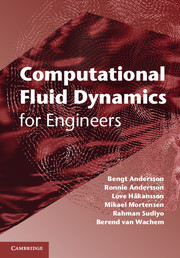Preface
Published online by Cambridge University Press: 05 January 2012
Summary
Computational fluid dynamics (CFD) has become an indispensable tool for engineers. CFD simulations provide insight into the details of how products and processes work, and allow new products to be evaluated in the computer, even before prototypes have been built. It is also successfully used for problem shooting and optimization. The turnover time for a CFD analysis is continuously being reduced since computers are becoming ever more powerful and software uses ever more efficient algorithms. Low cost, satisfactory accuracy and short lead times allow CFD to compete with building physical prototypes, i.e. ‘virtual prototyping’.
There are many commercial programs available, which have become easy to use, and with many default settings, so that even an inexperienced user can obtain reliable results for simple problems. However, most applications require a deeper understanding of fluid dynamics, numerics and modelling. Since no models are universal, CFD engineers have to determine which models are most appropriate to the particular case. Furthermore, this deeper knowledge is required since it gives the skilled engineer the capability to judge the potential lack of accuracy in a CFD analysis. This is important since the analysis results are often used to make decisions about what prototypes and processes to build.
Information
- Type
- Chapter
- Information
- Computational Fluid Dynamics for Engineers , pp. ix - xiiPublisher: Cambridge University PressPrint publication year: 2011
